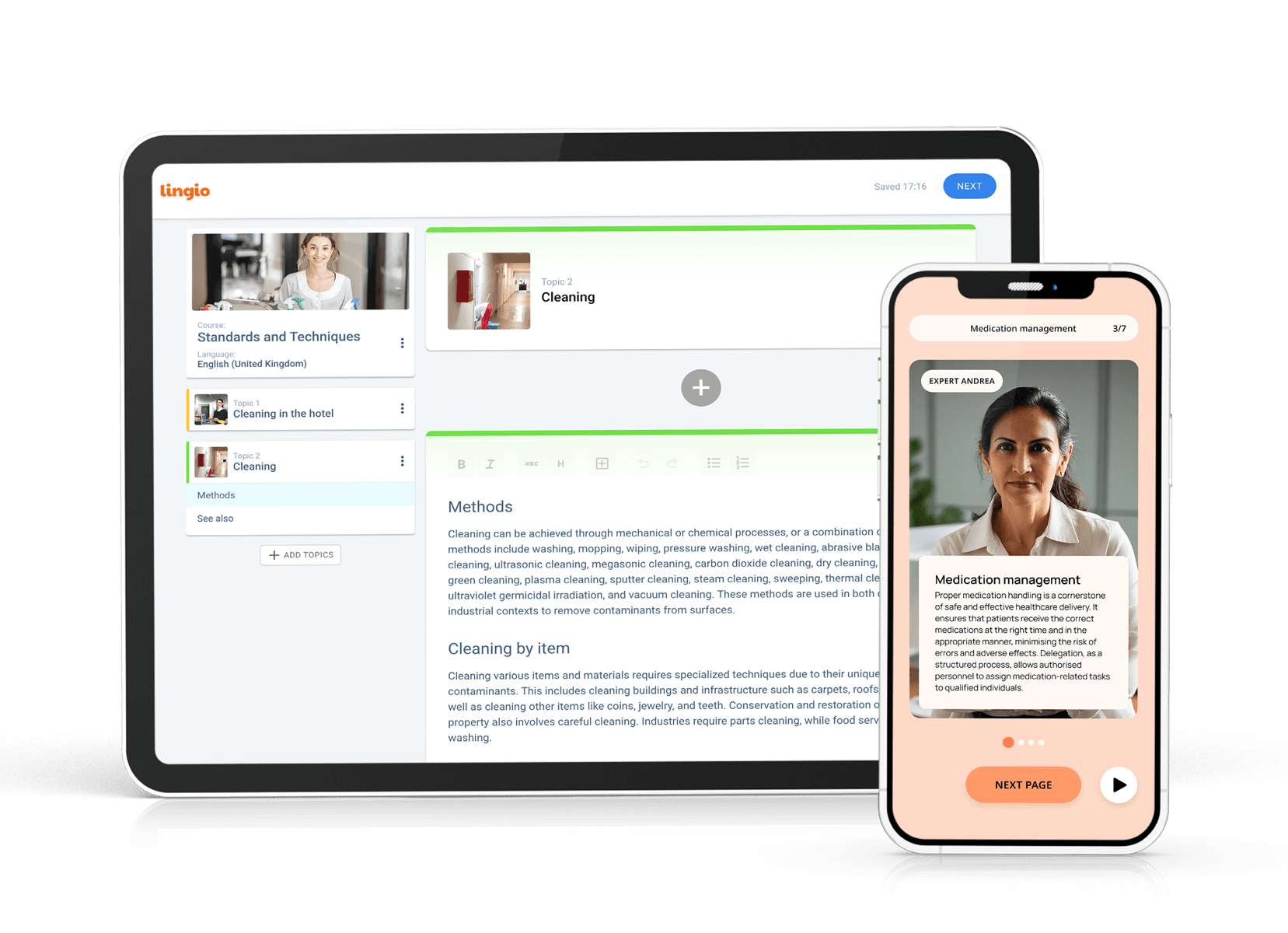Compliance training is a crucial aspect of any organisation. However, it often gets a bad reputation for being dull and uninspiring. Employees may dread the thought of attending yet another training session filled with monotonous lectures and endless slides. But what if compliance training could be engaging and fun? This article will explore seven tips to make compliance training more exciting and enjoyable.
What should you know about compliance training?
Compliance training ensures employees understand and adhere to their industry's rules, regulations, and ethical standards. It is crucial to any organisation's efforts to maintain legal and ethical practices. However, traditional methods of delivering compliance training can often be perceived as dry, monotonous, and ineffective. Employees may be disengaged and uninterested, leading to a lack of retention and application of the information presented.
To maximise the impact of compliance training, it is essential to make it engaging and enjoyable for participants. Organisations can transform compliance training into an exciting and valuable experience by incorporating innovative techniques and interactive elements.
Understanding the challenge of compliance training
Before we dive into the tips, let's first understand the challenges of compliance training. One major hurdle is the subject's complex and often dry nature. Rules and regulations can be confusing, and the consequences of non-compliance may not always be clear to employees.
Compliance training is like navigating through a maze of legal jargon and technicalities. It requires employees to grasp intricate details and understand how they apply to their specific roles and responsibilities. The sheer volume of information can be overwhelming, leading to frustration and disinterest.
Imagine deciphering a dense legal document filled with convoluted sentences and obscure references. It's no wonder that employees may struggle to comprehend the material and retain the necessary knowledge.
Furthermore, compliance training can be perceived as a mandatory task rather than a valuable learning opportunity. Employees may view it as just another box to check off on their to-do list, rather than an opportunity to enhance their skills and knowledge.
When employees approach compliance training with this mindset, it becomes challenging for trainers to capture their attention and keep them engaged. The lack of enthusiasm can result in passive learning, where employees simply go through the motions without truly absorbing the information.
Compliance training is often seen as a necessary but tedious task. However, it doesn't have to be that way. With the right approach, compliance training can be transformed into an enjoyable and interactive experience that educates employees and keeps them engaged and motivated. Now, let's explore seven tips that can help make compliance training fun and engaging.
7 Tips to make compliance training fun and engaging
Tip 1: Incorporate interactive learning tools
Gone are the days of passive learning. You can actively engage learners and participants in the training process by incorporating interactive learning tools such as quizzes, simulations, and games. These tools make the training more enjoyable and allow participants to apply their knowledge in real-life scenarios.
For example, imagine a scenario where employees are presented with a simulated ethical dilemma and are asked to make decisions based on their understanding of compliance policies. This interactive approach tests their knowledge and allows them to see the consequences of their actions in a safe environment.
Tip 2: Utilise real-life scenarios and role-playing
The best way to teach employees to understand the impact of compliance is through practical examples. By incorporating real-life scenarios and role-playing exercises, participants can see the consequences of their actions firsthand. This immersive approach makes the training more engaging and helps employees develop a deeper understanding of the importance of compliance.
For instance, you could create a role-playing exercise where employees take on different roles within a company and navigate compliance challenges. This hands-on experience allows them to see how their decisions can have legal, ethical, and financial implications.
Tip 3: Leverage gamification strategies
Who said compliance training can't be fun? You can turn compliance training into an exciting game-like experience by harnessing gamification strategies. Gamification techniques, such as leaderboards, badges, and rewards, motivate employees to participate and compete with their peers actively. This friendly and healthy competition often fosters a positive learning environment and helps increase knowledge retention.
Imagine a compliance training program where employees earn points and badges for completing modules, answering quiz questions correctly, and actively participating in discussions. These rewards recognise their achievements, create a sense of accomplishment, and encourage continuous learning.
Tip 4: Integrate multimedia and creative content
For better employee interest in the training, it is better to avoid text-heavy slides. To capture and maintain participants' attention, it's crucial to incorporate multimedia elements such as videos, images, and animations into the training material. Not only do these elements break the monotony, but they also make the content more visually appealing and memorable.
For example, instead of presenting a list of compliance regulations, you could create an engaging video that showcases real-life examples of compliance failures and their consequences. This visual storytelling approach grabs attention and helps employees connect with the subject matter more deeply.
Tip 5: Promote collaborative learning experiences
Compliance training doesn't have to be a solitary activity. Encourage employees to participate in group discussions and activities that promote collaborative learning. By sharing experiences and insights, participants can learn from one another and gain a broader perspective on compliance issues. This collaborative approach fosters engagement and creates a sense of community among employees.
Consider organising team-based activities where employees work together to solve compliance risk-related challenges. This not only encourages active participation but also enhances teamwork and communication skills.
Tip 6: Implement a modular training approach
Long, overwhelming training sessions can quickly drain participants' enthusiasm. Instead, consider breaking down the training material into smaller, digestible modules. This modular approach allows participants to focus on one concept at a time, promoting better retention and understanding. It also provides flexibility, enabling employees to complete the lengthy training sessions at their own pace.
By dividing the training into bite-sized modules, you can create a sense of accomplishment as employees progress through each module. This approach also allows for easy progress tracking and provides reinforcement and review opportunities.
Tip 7: Encourage feedback and continuous improvement
Feedback is instrumental in improving the efficacy of compliance training. Encourage participants to provide feedback on the compliance training content, delivery methods, and overall experience. Listen to their suggestions and make necessary adjustments to enhance future training sessions. This iterative continuous improvement process shows employees that their opinions matter and ensures the training remains engaging and up-to-date.
Consider implementing a feedback mechanism where employees can anonymously share their thoughts and suggestions. This encourages honest feedback and creates a safe space for employees to express their concerns or ask questions.
Best practices for implementing these tips
To maximise the impact of these tips, consider the following best practices:
- Personalise the training to cater to the specific needs of your organisation.
- Provide clear expectations and objectives for each training session.
- Regularly evaluate the effectiveness of the training methods and adjust as needed.
- Seek input from employees at all levels to ensure diverse perspectives.
Implementing these tips requires careful planning and execution. Personalising the training to cater to your organisation's specific needs is crucial for success. By understanding your organisation's unique challenges and goals, you can tailor the training content and delivery methods to address those specific areas. This personalised approach will help engage employees and make the training more relevant to their day-to-day work.
Furthermore, providing clear expectations and objectives for employees engaged in each training session is essential. Communicate what employees should expect to learn and achieve from the training. This will help set the right mindset and create a sense of purpose for participants. When employees clearly understand what is expected of them, they are more likely to participate and actively apply the knowledge gained during the training.
Regularly evaluating the effectiveness of the training methods is another crucial best practice. This evaluation should be an ongoing process, allowing you to gather feedback from participants and assess the impact of the training on their performance. By measuring the effectiveness of the training, you can identify areas for improvement and make necessary adjustments to enhance its impact.

Summary
Transforming compliance training from a mundane task into a dynamic and engaging learning experience is essential for fostering a culture of compliance and integrity within your organisation. Adopting the seven innovative tips outlined in this article ensures compliance training resonates with employees, encouraging active participation and long-term retention of crucial information.
Consider leveraging Lingio's cutting-edge training solutions to enhance your training programs further. Lingio specialises in creating interactive, customisable learning experiences that make compliance training informative and enjoyable. With Lingio, you can tailor your compliance training to meet the unique needs of your workforce, ensuring that your team is not only compliant but also engaged and motivated. Embrace these strategies and Lingio's solutions to elevate your compliance training, turning it into a powerful tool for building a knowledgeable, ethical, compliant organisation.
Frequently Asked Questions (FAQs)
1. How often should compliance training be conducted?
The frequency of compliance training depends on various factors, such as industry regulations and organisational needs. However, it is generally recommended to conduct regular refresher training sessions and update employees on any new compliance requirements. Compliance training is not a one-time event but an ongoing process. Organisations need to stay current with the ever-changing regulatory landscape and ensure that employees are equipped with the knowledge and skills to comply with the latest requirements. By conducting regular training sessions, organisations can reinforce the importance of compliance and help employees stay vigilant in identifying and addressing potential compliance issues.
2. Can compliance training be delivered online?
Yes, technology has made it easier than ever to deliver compliance training online. Online training platforms offer flexibility and convenience, allowing employees to complete the training at their own pace and access materials from anywhere.
Online compliance training has become increasingly popular due to its cost-effectiveness and scalability. It eliminates the need for in-person training sessions, saving organisations time and resources. Additionally, online training platforms often provide interactive modules, quizzes, and simulations, making the learning experience more engaging and effective.
3. Is compliance training only for certain industries?
Compliance training is essential for organisations across all industries. While the specific regulations may vary, the underlying principles of ethics, integrity, and legal compliance apply to every organisation. Compliance training helps organisations establish a culture of compliance where employees understand their responsibilities and the importance of adhering to laws and regulations. Organisations must ensure that employees know the specific compliance requirements for their roles and responsibilities regardless of the industry.
4. How can I measure the effectiveness of compliance training?
Measuring the effectiveness of compliance training can be done through various methods, such as knowledge assessments, surveys, and feedback from employees and stakeholders. Regular evaluations and tracking compliance metrics help determine if the training achieves its goals.
5. What are the consequences of non-compliance?
Non-compliance can severely affect organisations, including legal penalties, reputational damage, and financial losses. By prioritising compliance training, organisations can mitigate non-compliance risks and create a culture of ethical behaviour.


Table of contents
Intro
What should you know about compliance training?
Understanding the challenge of compliance training
7 Tips to make compliance training fun and engaging
Best practices for implementing these tips
Summary
Frequently asked questions (FAQs)


